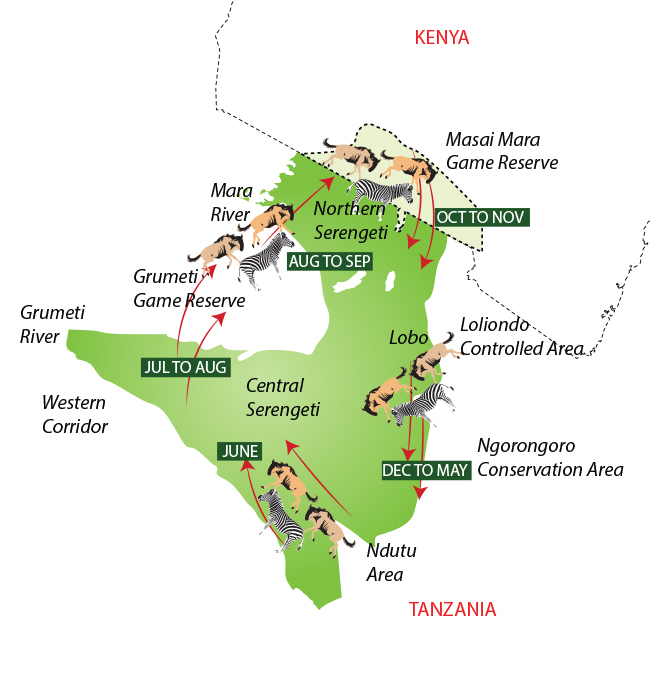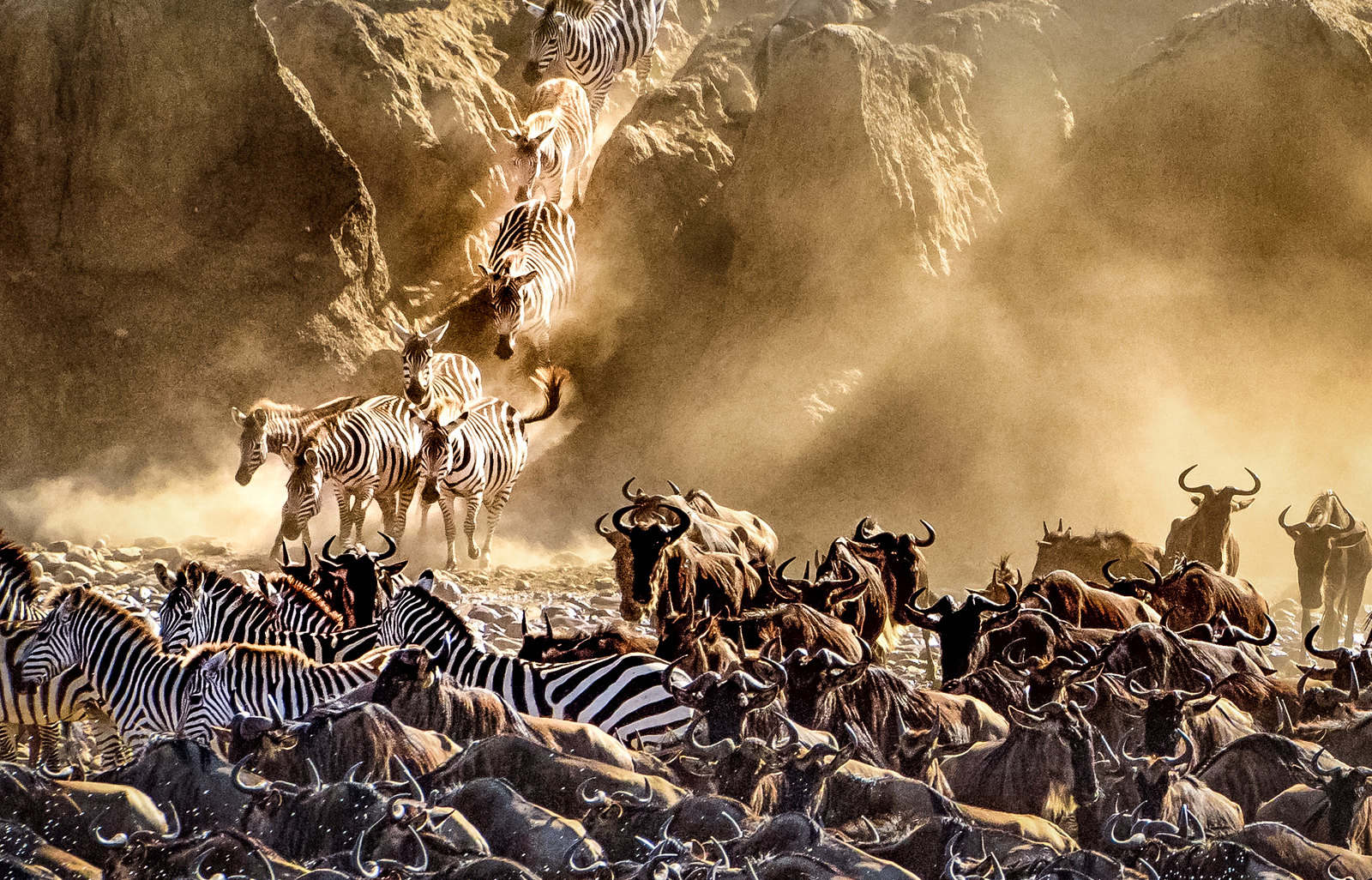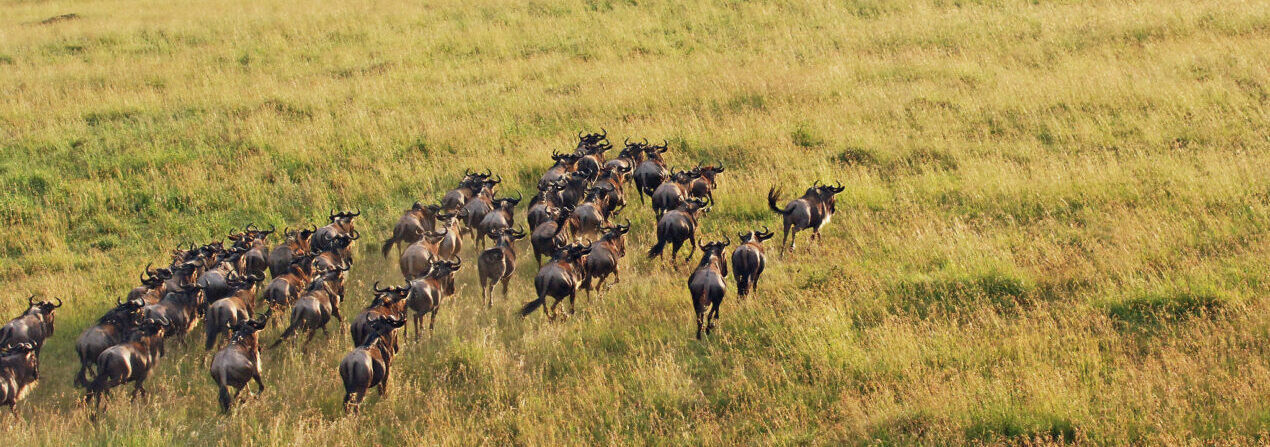embalakai Authentic Camp
Serengeti Wildebeest Migration
The great Serengeti wildebeest migration is the movement of vast numbers of the Serengeti's wildebeest, accompanied by large numbers of zebra, and smaller numbers of Grant's gazelle, Thomson's gazelle, eland and impala. These move in an annual pattern which is fairly predictable. They migrate throughout the year, constantly seeking fresh grazing and, it's now thought, better quality water.
The precise timing of the Serengeti wildebeest migration is entirely dependent upon the rainfall patterns each year – here we explain how the broad pattern works.
This migration, month by month, is shown on the map below – the moving red represents the main herds.
For more information on the Serengeti migration area and the wildebeest migration, read on – see the month-by-month descriptions below, and the video below that.
Moving migration maps
Below are twelve detailed maps plotting, month-by month, the typical migration pattern of the Serengeti’s great wildebeest migration.
This migration always varies from year to year, in response mainly to variations in the weather, the available grazing and available water. But these are the best general guide that we have to its location.
The migration on a map
The Great Migration is actually a fairly constant event: travellers will be able to see the animals year-round, but should choose their destination wisely, as, by nature, the migration is constantly moving.
One option some travellers choose is to go on an overland tour which visits both Kenya and Tanzania, hugely increasing their chances of seeing the Great Migration in person.
Did you know?
2 million animals migrate each year
Over two million animals migrate from the Serengeti in Tanzania to the Kenyan grasslands in the Masai Mara.
February is calving season
In February up to 8,000 calves are born a day. Calves (babies) are able to walk as soon as they are born. Few days after birth, babies can run with the rest of the herd.
Wildebeest can swim
They are relentless in their advance and will swim rivers and lakes in such huge masses that many are injured, lost (especially in the case of calves) or killed. The wildebeest must cross a river. But to do so, they must outrun a gauntlet of crocodiles.





